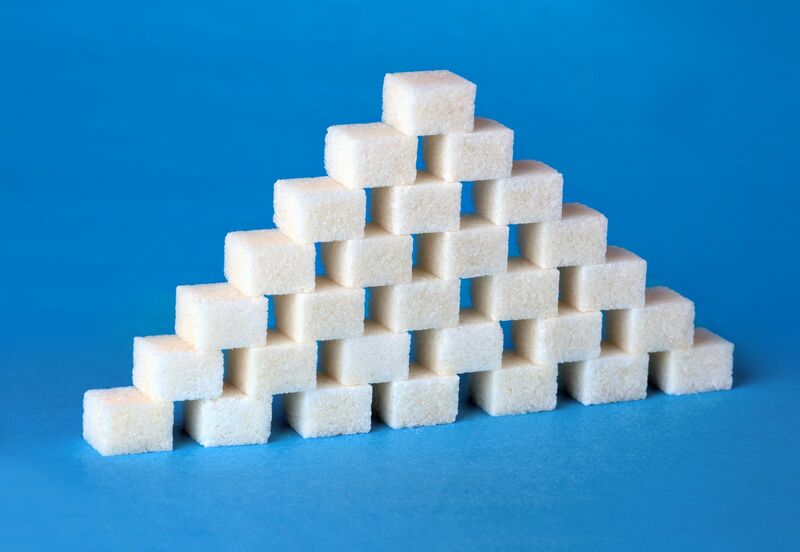
In my Q4 soft commodities report on Barchart, I highlighted world sugar #11 futures’ 6.14% rise in 2022, and 11.03% rally in Q1 2023, closing at the 22.25 cents per pound level on March 31. As the report came out on April 17, I wrote, “At 24.28 cents per pound on April 17, nearby sugar futures are challenging a multi-year high.” I pointed out that nearby sugar futures eclipsed the first technical resistance hurdle at the November 2016 23.90 cents high.
The sugar futures made a higher high in April and remained near the 26 cents per pound level on May 24.
Sugar continues to rally
World sugar futures have continued to make higher highs in Q2 2023.

The July ICE world sugar futures chart highlights the rise to 26.83 cents per pound on April 27, 2023. At just below the 26 cents level on May 24, the sweet commodity remains close to the recent high and is consolidating after the recent rally. Meanwhile, in April, the continuous contract rose to an even higher high.
The next upside resistance level is over 30 cents per pound
World sugar futures eclipsed the 23.90 high from October 2016 in April 2023.

The twenty-year chart shows the move to 27.41 cents, the highest price since October 2011. The next technical upside targets are the August 2011 31.85 cents and the February 2011 36.08 cents per pound peaks.
Sugar is a very volatile commodity - Its connection to energy could increase its price variance
Since 1970, nearby world sugar futures have exploded to extreme highs and imploded to significant lows.

The long-term chart illustrates the rise to the 66.0 cents record peak in November 1974 and a lower 44.80 cents high in November 1980. The 2011 36.08 cents peak was the highest price since 1980.
Meanwhile, sugar futures reached a 2.63 cents low in 1985 and a 1.50 cents bottom in 2003. While inflationary pressures have likely pushed world sugar prices to the most recent high, another factor supports prices.

Source: Statista
Brazil is the world’s leading producer and exporter of raw sugar, as the climate supports sugarcane production. In the U.S., corn is the primary ingredient in ethanol, but in Brazil, it is sugar that is biofuel input. High oil and gasoline prices and the trend of combating climate change with alternative and renewable energy sources have put upside pressure on sugar prices. Most Brazilian cars run on sugar-based ethanol, causing domestic sugar demand to increase. Today, sugar not only feeds the world but powers vehicles in Brazil.

Source: Statista
The chart shows Brazil is second to the U.S. in worldwide ethanol production, and Brazil and the U.S. are leading ethanol-exporting countries.
Climate change and green energy initiatives and the ongoing war in Ukraine have put upward pressure on fossil fuel prices. High oil and gasoline prices are bullish for sugar, increasing the demand for ethanol as an alternative fuel.
CANE is a sugar ETF
The Teucrium Sugar ETF product (CANE) holds a portfolio of active ICE sugar futures contracts, minimizing the risk when one contract rolls to the next active month. CANE does not invest its holdings in the nearby contract. Since nearby futures tend to attract the most speculative activity, the CANE ETF often underperforms the nearby sugar futures on the upside but outperforms when the price corrects to the downside.
Nearby sugar futures rose from 9.05 cents in 2022 to the most recent 27.41 cents high, a 203% rally.

Over the same period, CANE rose 187% from $4.91 to $14.08 per share, slightly underperforming the sweet commodity futures. At $13.72 on May 24, CANE had $39.984 million in assets under management. CANE trades an average of just over 81,000 shares daily and charges a 0.22% management fee.
SGG is the sugar ETN
The iPath Series B Sugar TR ETN product (SGG) tracks the price of nearby ICE sugar futures.

The chart illustrates the 218% rise in SGG from $29.71 to $94.48 per share over the same period.
While SGG tends to outperform CANE on the upside, CANE often falls less on a percentage basis when nearby ICE sugar futures move to the downside. At $91.35 per share on May 24, SGG had $43.85 million in assets under management. SGG trades an average of 5,525 shares daily and charges a 0.45% management fee.
The trend is always your best friend in markets. In late May 2023, the path of least resistance in sugar remains higher, and the CANE and SGG products and sugar futures could continue to generate sweet returns when the current consolidation period ends.
On the date of publication, Andrew Hecht did not have (either directly or indirectly) positions in any of the securities mentioned in this article. All information and data in this article is solely for informational purposes. For more information please view the Barchart Disclosure Policy here.






